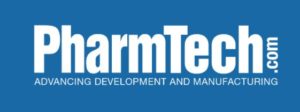Susan J. Schniepp, distinguished fellow at Regulatory Compliance Associates, and Rona LeBlanc-Rivera, PhD, principal consultant, Regulatory Affairs at Regulatory Compliance Associates, answer some questions about FDA’s January 2025 21 CFR 211.110 guidance document.
Q: How does FDA’s guidance, Considerations for Complying with 21 CFR 211.110, impact our current approach in complying with 21 Code of Federal Regulations (CFR) 211.110 (1)?

A: This guidance is currently in draft. However, when finalized, it will describe areas to be considered to ensure batch uniformity and drug product integrity. The guidance also discusses quality considerations for drug products manufactured using advanced in-process manufacturing techniques. Allowing flexibility to use new technological advances to determine drug product integrity and batch uniformity during manufacturing could reduce product reject rates because in-process results could be reported sooner (perhaps in-real time) and manufacturing corrections could be made to ensure the batch integrity. Drug products manufactured using advanced in-process techniques may have non-traditional quality considerations to determine the suitability of the product, and this guidance allows for flexibility and latitude on how to implement these controls effectively. It should be noted that the scope of this guidance pertains to commercial processes and not to products in development. The drug substance/API is also not within the scope of this guidance.
Q: How flexible is FDA in allowing alternative approaches to in-process controls, and what would be the process for gaining approval for such approaches?
A: FDA does allow manufacturers some flexibility to use better and more efficient methods to meet current good manufacturing practice (CGMP) requirements. It is recommended that companies gather the data and seek early FDA feedback regarding the use of alternative approaches for both in-process and quality parameters before submission of an application. Companies trying to introduce novel and new in-process test controls that yield more accurate and real-time measurements will have more success in getting approval by partnering with the FDA early in the process of introducing the new technology to the manufacturing process.
Q: What are FDA’s expectations for in-process material sampling frequency and methodology?
A: In-process sampling would be dictated by the nature of the drug and manufacturing process. It is not always feasible to obtain an in-process sample. In this guidance, FDA advises that innovative technologies may allow in-line, at-line, or on-line measurements in lieu of physical sample removal for testing.
Q: How does this guidance address the role of in-process controls in preventing drug shortages?
A: In the guideline, FDA states that it “supports the adoption of advanced manufacturing as a foundation for improving the overall quality and availability of drug products for patients.” Exploring how to improve manufacturing oversight through the use of the innovative technologies mentioned above could help enhance supply chain stability and eliminate some drug shortages. Advanced in-process and quality parameter controls may help reduce production failures that contribute to these shortages.
Q: If a more efficient in-process control method could reduce shortages but it is not covered in the guidance, how should companies seek FDA approval?
A: For an FDA-approved drug product, the application holder should gather the necessary data and documentation for filing a supplement (i.e., CBE [changes being effected]-30, PAS [prior approval supplement]) to their application regarding the use of alternative approaches. FDA would then review and provide comments on the proposed change and help identifying the best pathway forward for regulatory acceptance of innovative manufacturing techniques.
This new guidance offers flexibility to manufacturers, including contract manufacturing organizations, to introduce new, more efficient methodologies to measure batch uniformity and product integrity required to determine product suitability to ensure continued access to necessary pharmaceutical products. It is up to pharmaceutical industry to work with FDA and determine the best implementation strategy for realizing the benefits of modernizing manufacturing processes.
Reference
1. FDA. Considerations for Complying with 21 CFR 211.110, Draft Guidance (CDER, January 2025).
About the Article
Pharmaceutical Technology
Vol. 49, No. 3
Page: 34























